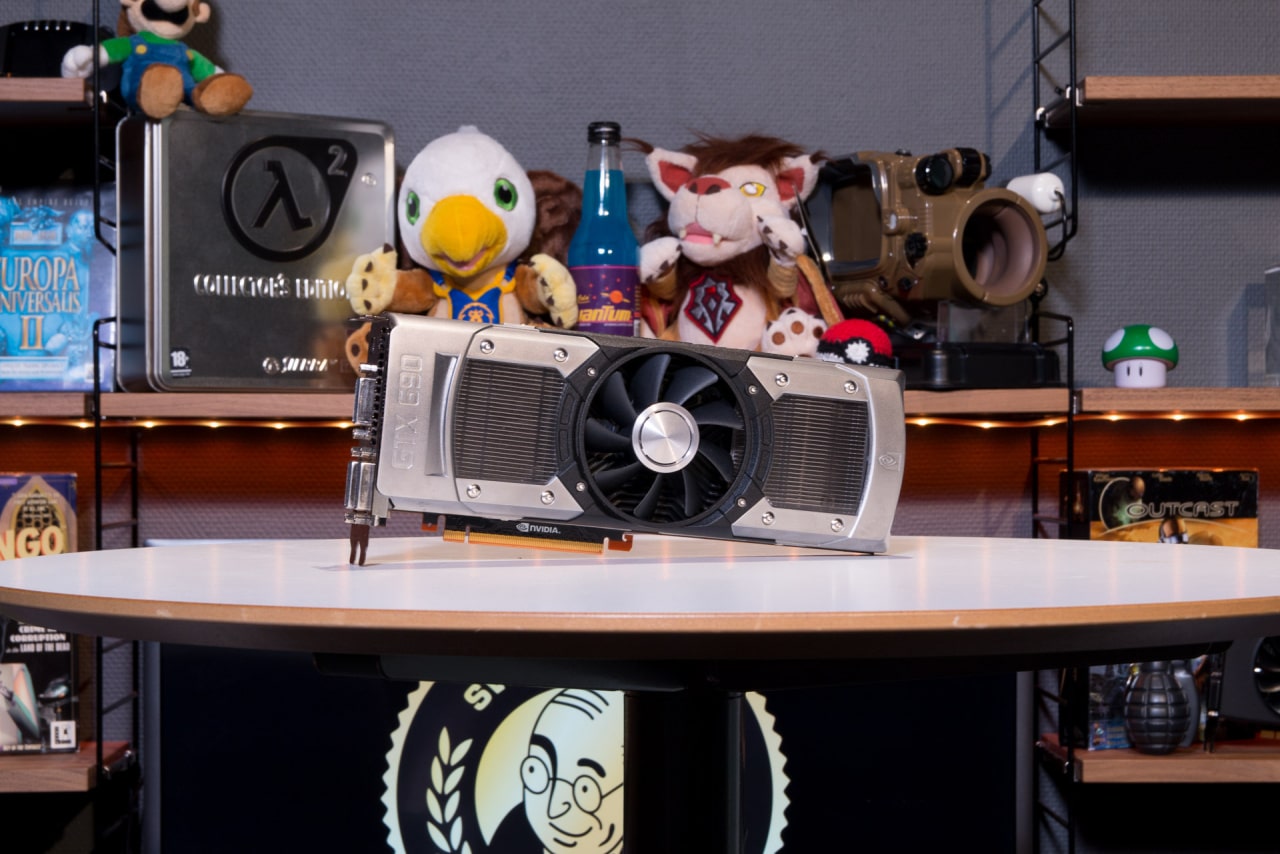In the spring of 2012, Nvidia launched its counterpart to AMD’s Radeon HD 7970 in the form of Geforce GTX 680. At the time of launch, the model won the battle as the graphics card with the fastest graphics circuit, but could not take home the trophy as the fastest graphics card then arch-rival Radeon HD 6990 with dual graphics circuits still held that position.
Behind the scenes, however, work was underway on what would be the next generation of flagships from Nvidia. The company knew that this was an extremely time-critical task, as AMD filed in parallel on its own performance monster Radeon HD 7990, which had a planned launch in the spring. In the end, however, the stress turned out to be unjustified because AMD delayed the launch of the flagship by a full year.
However, Nvidia kept to the schedule and just over a month after the launch of the Geforce GTX 680, the company released the world’s fastest graphics card – the Geforce GTX 690. In addition, the card was equipped with 4 GB of GDDR5 memory which was shared between the circuits.
In addition to a very high computing power on paper, the Geforce GTX 690 marked the start of Nvidia’s new reference design of graphics cards that would live on for many years to come. Gone was the high-gloss plastic from previous cards and instead a completely new cooling solution was introduced with a casing of brushed aluminum that covered a steam chamber-equipped cooling flange.
► Read SweClocker’s review of the Geforce GTX 690
When the card passed SweClocker’s test lab in May 2012, it was praised for its sky-high performance, well-built coolers and not least a perfectly reasonable power consumption for moving a flagship. Among the negative aspects was a filthy high price tag of just over SEK 9,000 and the dependence on the fact that the game titles needed to be optimized for the multi-graphics technology SLI.
Overall, however, the positive outweighed the odds, which meant that the card was awarded the “Top Class” award. The Geforce GTX 690 is seen by many as the last consumer card Nvidia released with several graphics chips. Admittedly, the company launched the sequel Geforce GTX Titan Z a couple of years later, but with a price tag of around SEK 25,000, it was out of reach for most people.
This is how the Geforce GTX 690 performs in 2019
Since the editorial staff still has a Geforce GTX 690 in the hardware archive, we must of course also see how it performs in today’s games compared to modern graphics hardware. The card is run in SweClocker’s usual test system for graphics cards and is tested in the games Battlefield 1, Far Cry 5 and Rise of the Tomb Raider at a resolution of 1,920 × 1,080 pixels. In terms of driver, Geforce Drivers 430.39 is used.
With the first results in hand from Battlefield 1, it is clear that the Geforce GTX 690 can still drive around modern titles in 1080p resolution. The model lands at about the same level as the Geforce GTX Titan and about 55 percent better than a single Geforce GTX 680. In comparison to rival AMD’s Radeon HD 7990, however, there are unimpressive numbers that are shown, as that card performs as much as 34 percent better than Geforce GTX 690.
Geforce GTX 690 gives good results in Far Cry 5, but does not manage to keep an average of 60 FPS. The model performs marginally better than a Geforce GTX Titan but is defeated by popular single circuit boards such as the Geforce GTX 970 and Radeon R9 290X. In addition, the competitor AMD’s Radeon HD 7990 performs as much as 53 percent better than the Geforce GTX 690 in this title.
In Rise of the Tomb Raider, the Geforce GTX 690 presents relatively respectable figures for a seven-year-old graphics card and lands at an average just below the 60 FPS line. However, the subjective experience is somewhat shaky, which also makes an impression in the lowest values from the measurements. Radeon HD 7990 has the least lead here in the tested games, but still takes home the win with 22 percent better performance.
Summary thoughts on the Geforce GTX 690 seven years later
That the Geforce GTX 690 was a really cool graphics card when it was released is hard to deny. The model offered really impressive performance and was a particularly strong choice for those who at that time wanted to play in higher resolutions. In addition, Nvidia’s new reference cooler set a completely new bar for what the graphics card maker’s path would look like for many years to come with its own designers.
With that said, however, the time caught up with the Geforce GTX 690 relatively quickly. Although the results in today’s tests look fully capable, this is a card that was designed for significantly higher resolutions than 1080p – something that does not sound good with the card’s limited graphics memory together with modern games.
After the launch of the cards, more and more developers began to put gunpowder on more high-resolution textures in their games, which became a problem as the card in practice only had one frame buffer at 2 GB. Those who played in high resolutions could often feel this through real frame rate dips when the memory ran out, something that felt very sad considering that the computing power was still there.
In summary, the Geforce GTX 690 is a card that can still be played to a great extent even today, but you need to watch out for particularly memorable games and really make sure that the title has implemented SLI support.
Did you own a Geforce GTX 690 when it went, or do you even own one today? Share your experiences in the comment thread of this article!















